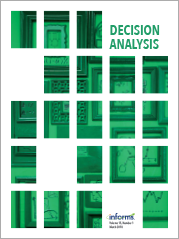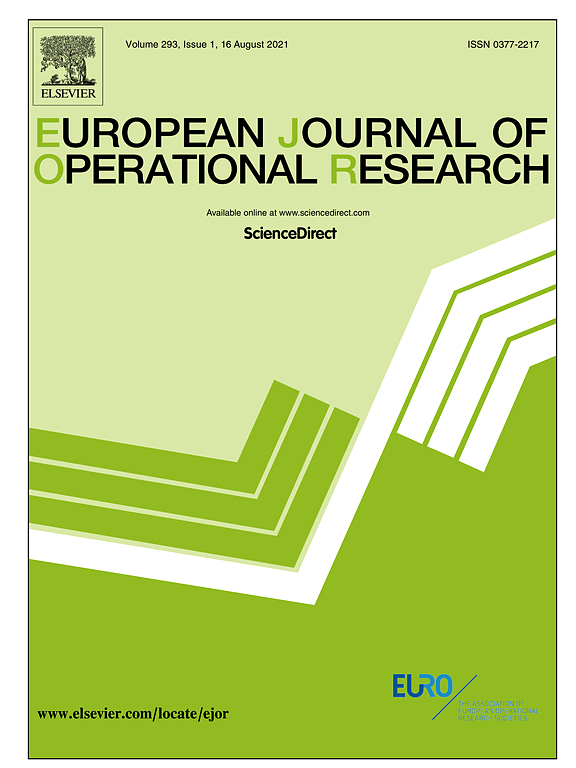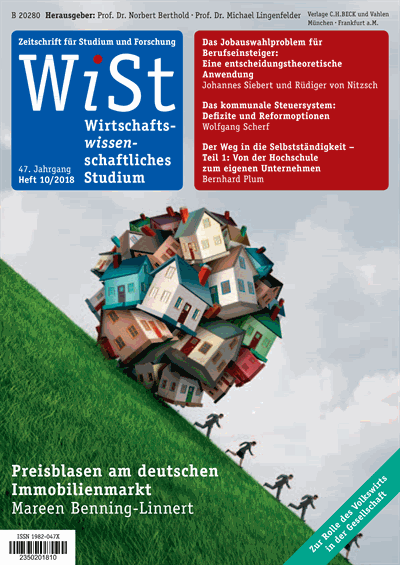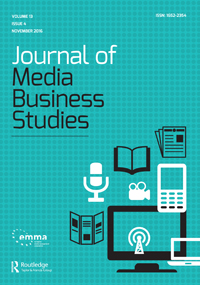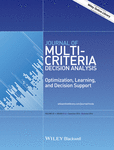Comparative Analysis of Terrorists’ Objectives Hierarchies
To develop effective counterterrorism strategies, it is important to understand the capabilities and objectives of terrorist groups. Much of the understanding of these groups comes from intelligence collection and analysis of their capabilities. In contrast, the objectives of terrorists are less well understood. In this article, we describe a decision analysis methodology to identify and structure the objectives of terrorists based on the statements and writings of their leaders. This methodology was applied in three case studies, resulting in the three objectives hierarchies of al-Qaeda, Islamic State of Iraq and the Levant (ISIL), and Hezbollah. In this article, we propose a method to compare the three objectives hierarchies, highlight their key differences, and draw conclusions about effective counterterrorism strategies. We find that all three terrorist groups have a wide range of objectives going far beyond the objective of killing and terrorizing people in the non-Muslim world. Among the shared objectives…
Effects of Proactive Decision Making On Life Satisfaction
Proactive decision making, a concept recently introduced to behavioural operational research and decision analysis, addresses effective decision making during its phase of generating alternatives. It is measured on a scale comprising six dimensions grouped into two categories: proactive personality traits and proactive cognitive skills. Personality traits are grounded on such theoretical constructs as a proactive attitude and proactive behaviour; cognitive skills reflect value-focused thinking and decision quality. These traits and skills have been used to explain decision satisfaction, although their antecedents and other consequences have not yet been the subject of rigorous hypotheses and testing.
This paper embeds proactive decision making within a model of three possible consequences. We consider—and empirically test—decision satisfaction, general self-efficacy, and life satisfaction by conducting three studies with 1,300 participants. We then apply structural equation modelling to show that proactive decision making helps account for life satisfaction, an explanation mediated by general self-efficacy and decision satisfaction. Thus proactive decision making fosters greater belief in one’s abilities and increases satisfaction with one’s decisions and with life more generally. These results imply that it is worthwhile to help individuals enhance their decision-making proactivity.
Demonstrating the positive effects of proactive decision making at the individual level underscores how important is the phase of generating alternatives, and it also highlights the merit of employing “decision quality” principles and being proactive during that phase. Hence the findings presented here confirm the relevance of OR, and of decision-analytic principles, to the lives of ordinary people.
Developing the decision support system “Entscheidungsnavi”
My objective improving individual and organizational decision-making. Therefore, my colleague von Nitzsch (RWTH Aachen) and I develop a web-based decision support system for decisions with multiple objectives (www.entscheidungsnavi.de, more information the project: www.proaktiv-entscheiden.de). The special about the entscheidungsnavi is sophisticated support which allows decision-makers to structure their decision problem appropriately. Furthermore, the latest research results on decision-making biases and behavior, in general, are considered to ensure high-quality results
The job selection problem for career starters: a decision-theoretical application part 1: structuring the problem into objectives, alternatives, and uncertainties
Veröffentlichung Siebert, Johannes U.; von Nitzsch, Rüdiger. “ The Job Selection Problem for Career Starters: A Decision-Theoretical Application. Part 1: Structuring the Problem into Objectives, Alternatives and Uncertainties“, Scientific Contributions, Wirtschaftswissenschaftliches Studium, October 2020 This two-piece paper describes how to solve a practical decision problem using decision theory. The first part emphasizes the high importance of a solid structuring of the decision situation in objectives, alternatives, and uncertainties. It is shown how to proceed in this step with the support of a decision analyst. The following second part uses the results of the first part and shows how to find an optimal alternative by a quantification of the necessary parameter. Short text: After graduation, the question arises for the graduates with which job they want to start their further career. A decision-theoretical analysis uses a practical example to show how the decision problem can be well-structured with the help of…
»EMPOWER«: A Decision Support System to Increase Efficiency of Logistic Processes in Upper Franconian SMEs
Due to the changing framework conditions and customer requirements, such as shorter delivery times and increasing adherence to delivery dates, small and medium-sized enterprises (SMEs) in Upper Franconia are increasingly confronted with an increase in logistics performance and a reduction in logistics costs. Logistics, especially production logistics, is an essential basis for these companies to generate competitive and cost advantages and is becoming increasingly important.
In this context, however, many SMEs are asking themselves how the potential for generating competitive and cost advantages in production logistics can be identified, evaluated, and leveraged. Generally, it is possible to raise the identified potential by deriving concrete optimization measures. However, deriving these measures is difficult in many cases, and there is a deficit regarding a methodically structured and systematic decision-making process.
Developing more and better alternatives (individually as well as in groups)
Many individuals and organizations spend most of their effort evaluating alternatives without ensuring that the best possible alternative is to be chosen. Therefore, we analyzed how individuals and organizations can systematically create more and better alternatives to improve the outcome of their decision-making. The main idea is to use objectives as a stimulus in alternative creation (Keeney 1992). In cooperation with Ralph Keeney (Duke University, USA), I conducted five experiments. The participants created alternatives for essential decisions they were highly involved with. In summary, these experiments provided extensive evidence that using objectives for creating alternatives impacts the number and quality of alternatives created significantly. The results were used to derive a guideline for creating alternatives in critical decision situations.
Can Novices Create Alternatives of The Same Quality as Experts?
The quality of alternatives is crucial for making good decisions. The process of generating high-quality alternatives can be enhanced by using decision makers’ objectives as prompts. This paper examines empirically the impact and interrelation of experience and the prompting with objectives on decision makers’ ability to create alternatives for an important decision. The study confirms with high significance that both experience and prompting with objectives enhance the quality of alternatives. We are able to show that all participants, irrespective of their experience, enhance the quality of their alternatives when they are prompted with objectives; i.e., the relationship between being prompted with objectives and the quality of alternatives is not moderated by experience. In contrast to gaining experience, prompting a participant with objectives can be utilized immediately without a long learning phase and is able to substitute for experience in certain decision contexts. Furthermore, we analyze how prompting with objectives affects the creation of alternatives. We find evidence that the relation between being prompted with objectives and the quality of alternatives is partially mediated by the number of objectives considered while creating alternatives.
Recommendations about decision-making for California ministry of transportation
The California Department of Transportation has a budget of approximately US$ 10 billion over four years for repairing the infrastructure of California’s freeways and freeway bridges. However, this budget is not sufficient to implement all the measures requested. A selection of measures to be carried out must therefore be made. Among other things, this is difficult because, for example, the representatives of the various Californian districts are demanding as many repair measures as possible in their own administrative area to improve their district’s infrastructure, create jobs, and ultimately be re-elected. Similar problems, for example, in allocating funds for broadband expansion, are all too well known in Germany. Clear and precise evaluation criteria are required for transparent evaluation and logical selection.
A Media-Specific Balanced Scorecard Based on Value-Focused Thinking
Veröffentlichung Kunz, Reinhard; Siebert, Johannes U.; Mütterlein, Joschka. „A Media-Specific Balanced Scorecard Based on Value-Focused Thinking“, Journal of Media Business Studies, 13(4), 2016, 257-275. http://www.tandfonline.com/doi/full/10.1080/16522354.2016.1220114 Objectives are fundamental to strategic management. However, while research exists on objectives of media companies, we know little about the relationships between them. In order to advance research in this field, we used value-focused thinking to investigate the objectives of a media company and the balanced scorecard as a framework to demonstrate their relationships. In interviews with 23 managers and employees of a German medium-sized local newspaper company, we found 698 distinct objectives and 1009 relationships. By concentrating on the most important objectives, we derived a balanced scorecard with 33 objectives and 65 relationships organised in seven perspectives. The results were then validated in a second case study on a Czech national media group.
Combining Value‐Focused Thinking and Balanced Scorecard to Improve Decision‐Making in Strategic Management
Goal orientation is key to strategic management. In this field, the Balanced Scorecard is one of the most widely used management tools. It structures a company’s main objectives from different perspectives based on the strategy of the firm and uses performance indicators to measure the achievement of objectives and strategy. However, its method of creation is not theoretically sound. Value‐focused thinking is a decision‐making philosophy that fits perfectly with Balanced Scorecard creation. It provides methods and techniques for the identification and structuring of objectives that are suitable to systematically derive a scorecard from a means‐ends network. However, such a means‐ends network is often too complex for enduring use in strategic management. By adapting the network’s structure to the Balanced Scorecard’s layout, the profound and clear set of derived objectives and their measures serve as a reasonable basis for applying methods of multi‐criteria decision‐making in an organization.
This paper aimed to outline a procedure that merges the Balanced Scorecard and value‐focused thinking by preserving each concept’s strengths while eliminating their weaknesses. A six‐step process was developed theoretically and employed empirically in a case study. This process included (1) identifying objectives; (2) structuring objectives; (3) characterizing clusters of objectives; (4) formulating mission, vision, and strategy; (5) designing the scorecard; and (6) monitoring and adapting to change. On the basis of this approach, a Management Scorecard was produced that enabled strategy development and execution, put forth a clear and comprehensive means‐ends network, and visualized a company’s most important objectives and their relationships structured through perspectives roughly following the Balanced Scorecard. It acts as a foundation for research to generalize and compare findings regarding goals of organizations. Our procedure demonstrates how scientific methods, such as value‐focused thinking, can yield benefits to practitioners’ instruments, like the Balanced Scorecard, and how management tools can likewise improve scientific methods.
